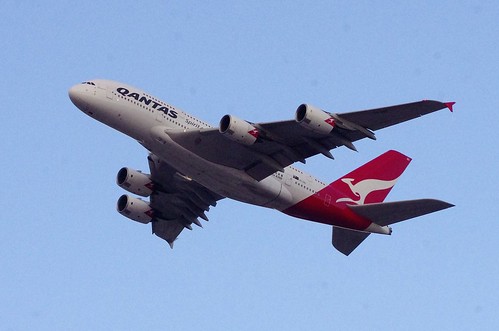Qantas debacle helps explain why Future Fund is staying bearish
Qantas #Qantas

As Arndt explained on Wednesday, the Future Fund’s house view is favourable investment conditions of the past decade – rock bottom interest rates, abundant fiscal stimulus and globalisation – have reversed.
What the Future Fund sees now is a world where inflation remains stickier, interest rates remain higher and government and regulatory intervention is more prevalent. That’s precisely what we’ve seen at Qantas – the government trying to pick a winner and keeping inflation sticky in the process.
Arndt’s mission in the past two years has been to try to build a more diversified, more inflation-resistant portfolio. In the 2023 financial year, some of those bets didn’t immediately pay off, and the Future Fund’s 6 per cent return for the 2023 financial year was below both its 10.1 per cent return target and the median balanced superannuation fund return of 9.1 per cent. However, tax and liquidity differences between the Future Fund and super funds means that a direct comparison needs to be treated with some caution.
But Arndt is confident he’s got the settings right for the long term.
He’s happy to remain moderately below neutral risk settings in the belief that markets are underpricing many of the big risks facing markets, including the eventual arrival of the lagged effects of interest rate rises and the potential for a sharp slowdown in China.
He’s happy not to chase hot AI stocks in US markets, and instead wait for billions of dollars of investments in AI start-ups in the fund’s venture capital portfolios to pay off.
And while the Future Fund is benefiting from better returns from higher rates, Arndt is happy to maintain inflation-linked exposures such as infrastructure, which don’t do as well when real yields are rising like they are now, but should outperform if inflation remains sticky.
“We’ve really got a much more long-term lens on how we’re building the portfolio and how we expect that to pay off, and we very clearly think it continues to be the right settings for this investment environment,” Arndt says.
The Future Fund’s declaration on Wednesday that its “holdings and returns will look increasingly different from those of other asset owners” is a clear message that the paths of the Future Fund and the super funds will diverge even further. The 6 per cent return Costello and Arndt produced in 2023 is a good example of that; this was a deliberate decision to leave risk on the table in a tricky environment, and Arndt is happy to weather any short-term underperformance.
One new note of caution that was emphasised more strongly than in the past concerned China. Costello warned that while Chinese demand for Australian commodities had produced the best terms of trade since the gold rush in the 1800s, the potential for a deep Chinese slowdown to hit Australia is real.
“If China is facing significant structural problems, as we think it is, that will rebound back, we think, on Australian companies and the Australian economy.”
Arndt has reduced his portfolio’s exposure to China markedly, and that looks unlikely to reverse any time soon.
“It just looks like there’s a lot of risk there. And the returns don’t look all that attractive when you weigh it up.”